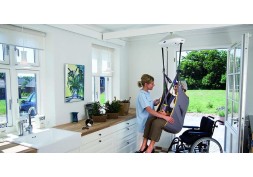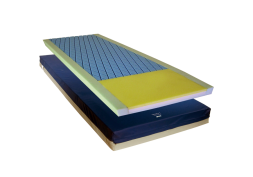What is 'Patient Moving and Handling'?

An explanation of the best practices for patient moving and handling and how to best carry out such tasks during day-to-day patient handling routines.
Patient moving and handling refers to the safe and efficient techniques used by healthcare professionals to assist patients in changing positions, transferring, or mobilising when they have difficulties moving independently. This is crucial to prevent injuries to both the patient and the carer.
The process of patient moving and handling involves several key principles and practices:
Assessment: Before attempting any movement, healthcare professionals should assess the patient's physical condition, mobility limitations, and any potential risks involved. This assessment helps determine the most appropriate moving and handling techniques.
Communication: Effective communication between the patient and the carer is essential. The carer should explain the procedure to the patient, obtain their consent, and encourage them to assist to the best of their ability, if possible.
Body mechanics: Proper body mechanics are crucial for the carer to avoid strain and injuries. Techniques such as keeping the back straight, bending the knees, and using the large muscles of the legs rather than the back help reduce the risk of injury.
Use of equipment: Various assistive devices and equipment, such as hoists, transfer belts, sliding sheets, and mobility aids, can be employed to facilitate patient movement safely. The carer should be trained in the correct use of these devices.
Teamwork: For more complex or heavy patient transfers, it's essential for healthcare professionals to work together as a team to ensure the safety of both the patient and the carers.
Risk assessment: Identifying potential risks and taking appropriate precautions is essential to prevent accidents or falls during patient handling. This includes considering the patient's weight, stability, and any medical conditions that could affect their mobility.
Encouraging independence: When possible, healthcare professionals should encourage patients to participate in their own movements and transfers, promoting their independence and well-being.
Regular training: Healthcare providers should receive regular training in patient moving and handling techniques to stay up-to-date with best practices and safety guidelines.
By following these principles and practices, healthcare professionals can ensure that patients are moved and handled in a safe, dignified, and respectful manner, promoting their comfort and well-being while reducing the risk of injury to both the patient and the carer.


